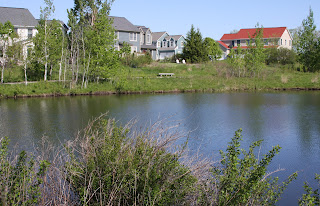The APEX awards are given each year to recognize outstanding publication work in a variety of fields by Communication Concepts, and Illinois-Indiana Sea Grant was chosen as one of this year’s winners!
From their website:
“…(Communication) Concepts sponsors the APEX Awards, the annual Awards for Publication Excellence, an awards competition providing recognition for outstanding publishing efforts from newsletters and magazines to annual reports, campaigns, social media and websites.”
IISG’s Terri Hallesy and Robin Goettel were chosen for the “Education & Training Publications” category. Their “Fresh and Salt” project, a collaboration with Center for Ocean Sciences Education Excellence Great Lakes, collected activities, lessons, and other materials that joined Great Lakes and ocean topics in a cohesive way.
 Designed for students in grades 5-10, the “Fresh and Salt” curriculum incorporated multiple facets of science education. Students learn about and even work on interactive mapping, investigation, experimentation, and additional concepts related to the science of both fresh and saltwater.
Designed for students in grades 5-10, the “Fresh and Salt” curriculum incorporated multiple facets of science education. Students learn about and even work on interactive mapping, investigation, experimentation, and additional concepts related to the science of both fresh and saltwater.
The curriculum’s 14 activities were structured for effective science learning, and to prepare students as future decision-makers and leaders. Activities were carefully selected based on a distinct set of criteria that would help students apply science process skills needed for effective learning.
Aligned with Great Lakes and Ocean literacy principles, timely issues include:
• Dominant physical features and their interconnections
• Geological phenomena
• Influence on weather and climate
• Human-environment connections and impacts
• Sustaining life on earth
• Biodiversity, food webs, and energy flows
• Exploration and technology innovation
“The COSEE Great Lakes Team accomplished our goal of providing educators with a science-based education resource that makes learning engaging,” said Hallesy. “It provides creative ideas to teach students about the Great Lakes and our oceans. Our intention is to educate students about ways to preserve and protect our aquatic ecosystems, while promoting environmental stewardship. ‘Fresh and Salt’ allows teachers to access relevant and timely science information leading to global awareness and environmental change.”
The entire Fresh and Salt curriculum can be downloaded from IISG’s education webpage.
Teachers are encouraged to incorporate relevant activities and lessons into their planning. In addition, educators can contact Terri Hallesy or Robin Goettel to learn about other opportunities and materials for their classrooms.
Communication Concepts is a firm that works with firms to improve communications, PR, marketing, and more. They also provide reports on current trends and give annual awards to projects and organizations for their outstanding publications.







